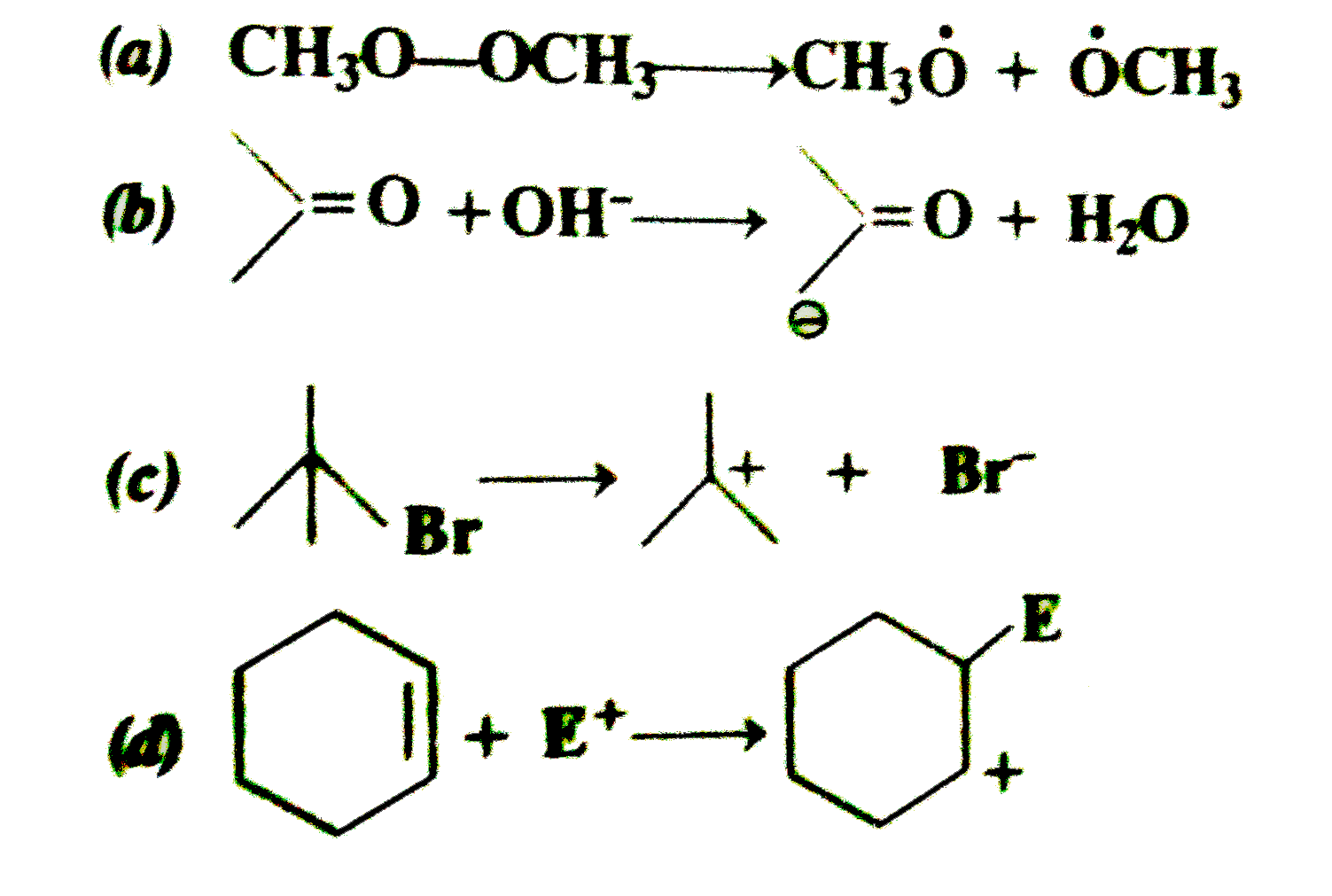The reaction intermediate produce by homolytic cleavage of bond is called,
Carbocation
Carbanion
Fee radicals
None of these
The correct Answer is:C
To solve the question regarding the reaction intermediate produced by homolytic cleavage of a bond, we can follow these steps:
Step 1: Understand Bond Cleavage
- Definition: Bond cleavage refers to the breaking of a chemical bond between two atoms.
- Types of Cleavage: There are two main types of bond cleavage: homolytic and heterolytic.
Step 2: Differentiate Between Homolytic and Heterolytic Cleavage
- Heterolytic Cleavage: In this process, the bond breaks unevenly, resulting in one atom taking both electrons from the bond. This leads to the formation of charged species:
- Carbocation: A positively charged carbon species (electron-deficient).
- Carboanion: A negatively charged carbon species (electron-rich).
- Homolytic Cleavage: In this process, the bond breaks evenly, and each atom takes one electron from the bond. This results in the formation of neutral species with unpaired electrons.
Step 3: Identify the Reaction Intermediate from Homolytic Cleavage
- Free Radicals: The species formed from homolytic cleavage are called free radicals. Each free radical contains one unpaired electron, making them highly reactive.
Conclusion
- The reaction intermediate produced by the homolytic cleavage of a bond is called a free radical.
---
- Definition: Bond cleavage refers to the breaking of a chemical bond between two atoms.
- Types of Cleavage: There are two main types of bond cleavage: homolytic and heterolytic.
- Heterolytic Cleavage: In this process, the bond breaks unevenly, resulting in one atom taking both electrons from the bond. This leads to the formation of charged species:
- Carbocation: A positively charged carbon species (electron-deficient).
- Carboanion: A negatively charged carbon species (electron-rich).
- Homolytic Cleavage: In this process, the bond breaks evenly, and each atom takes one electron from the bond. This results in the formation of neutral species with unpaired electrons.
- Free Radicals: The species formed from homolytic cleavage are called free radicals. Each free radical contains one unpaired electron, making them highly reactive.
- The reaction intermediate produced by the homolytic cleavage of a bond is called a free radical.
Topper's Solved these Questions
- ORGANIC CHEMISTRY: SOME BASIC PRINCIPLE AND TECHNIQUESBOOK - AAKASH INSTITUTE ENGLISHCHAPTER - ORGANIC CHEMISTRY: SOME BASIC PRINCIPLE AND TECHNIQUESEXERCISE - SECTION-B OBJECTIVE TYPE QUESTION (ONE OPTION IS CORRECT)
37 Videos
- ORGANIC CHEMISTRY: SOME BASIC PRINCIPLE AND TECHNIQUESBOOK - AAKASH INSTITUTE ENGLISHCHAPTER - ORGANIC CHEMISTRY: SOME BASIC PRINCIPLE AND TECHNIQUESEXERCISE - SECTION-C OBJECTIVE TYPE QUESTION (MORE THAN ONE OPTIONS ARE CORRECT)
18 Videos
- ORGANIC CHEMISTRY: SOME BASIC PRINCIPLE AND TECHNIQUESBOOK - AAKASH INSTITUTE ENGLISHCHAPTER - ORGANIC CHEMISTRY: SOME BASIC PRINCIPLE AND TECHNIQUESEXERCISE - ILLUSTRATION
3 Videos
- ORGANIC CHEMISTRY : SOME BASIC PRINCIPLES AND TECHNIQUES BOOK - AAKASH INSTITUTE ENGLISHCHAPTER - ORGANIC CHEMISTRY : SOME BASIC PRINCIPLES AND TECHNIQUES EXERCISE - Assignment(Section-D)(Assertion - Reason Type Questions)
15 Videos
- POLYMERSBOOK - AAKASH INSTITUTE ENGLISHCHAPTER - POLYMERSEXERCISE - ASSIGNMENT (SECTION-D)
13 Videos
Similar Questions
Knowledge Check
Find out correct order for the energy required for heterolytic cleavage of indicated C-Cl bonds forming carbocation :
 AX>Y>ZBZ>Y>XCZ>X>YDY>X>Z
AX>Y>ZBZ>Y>XCZ>X>YDY>X>Z
A cell formed from cleavage is called
View SolutionIn propagation step, the reaction intermediate of radical polymerisation is
View SolutionSolid ball of cell produced by repeated cleavage is called
View SolutionSolid ball of cell produced by repeated cleavage is called
View SolutionWhat type of reaction intermediates are obtained when a covalent bond undergoes homolytic fission?
View SolutionFor the following bond cleavages, use curved-arrows to show the electron flow and classify each as homolysis or heterolysis. Identify reactive intermediate produced as free radical, carbocation and carbanion.

View SolutionIn the avove reaction the intermediate species are :

View Solution

